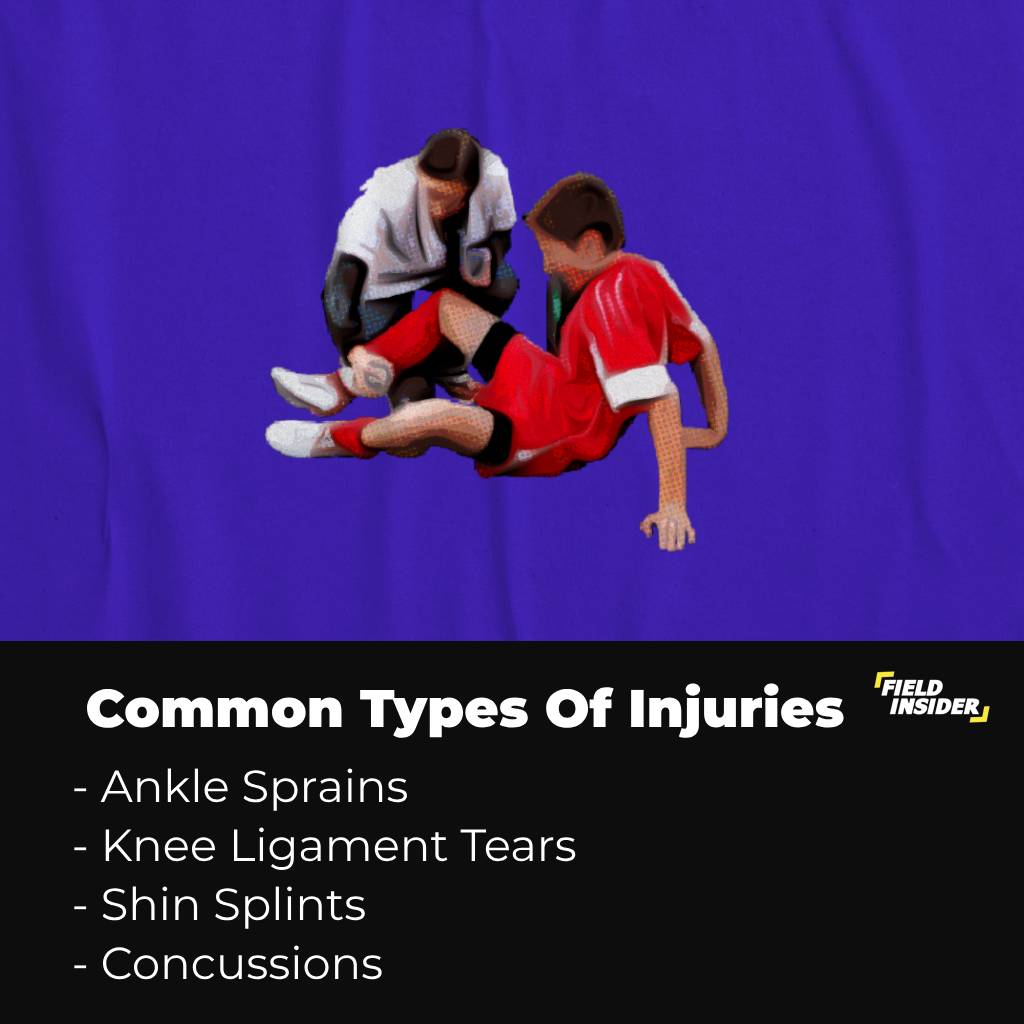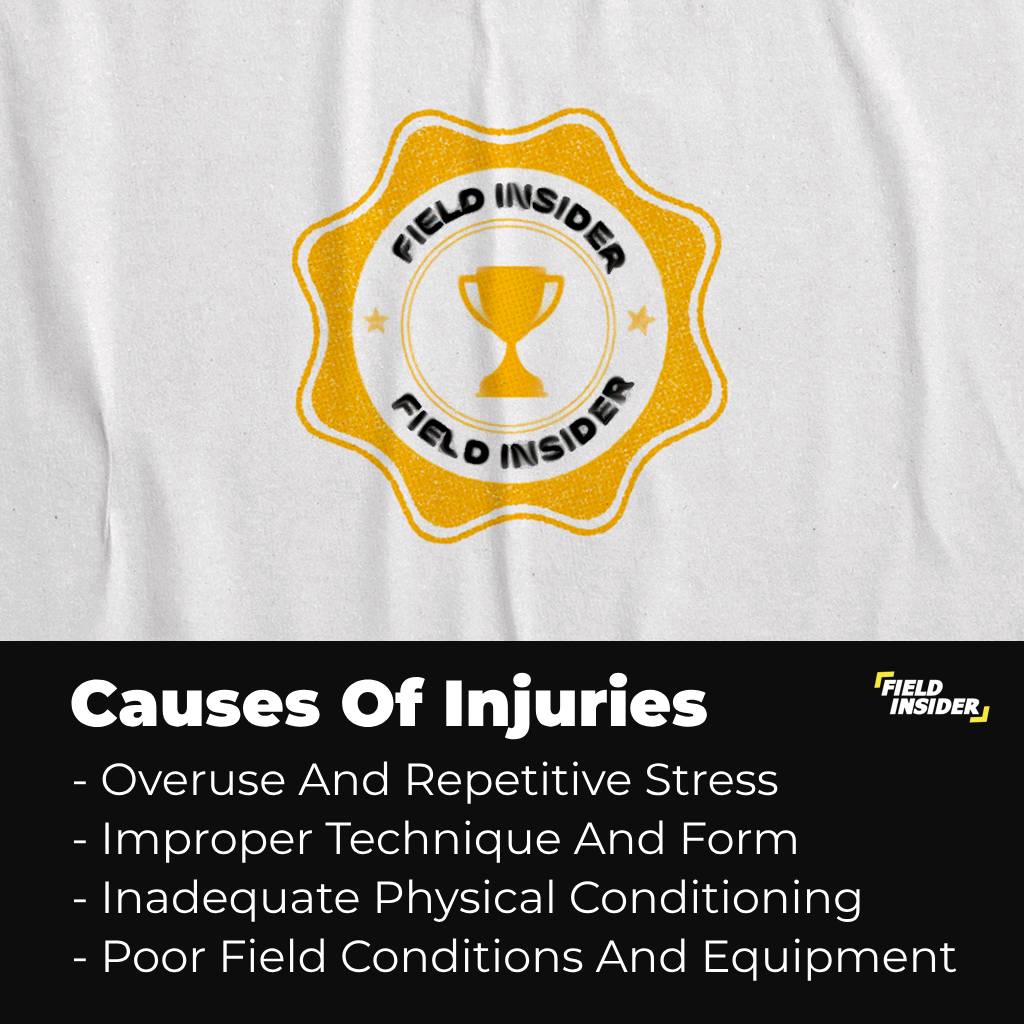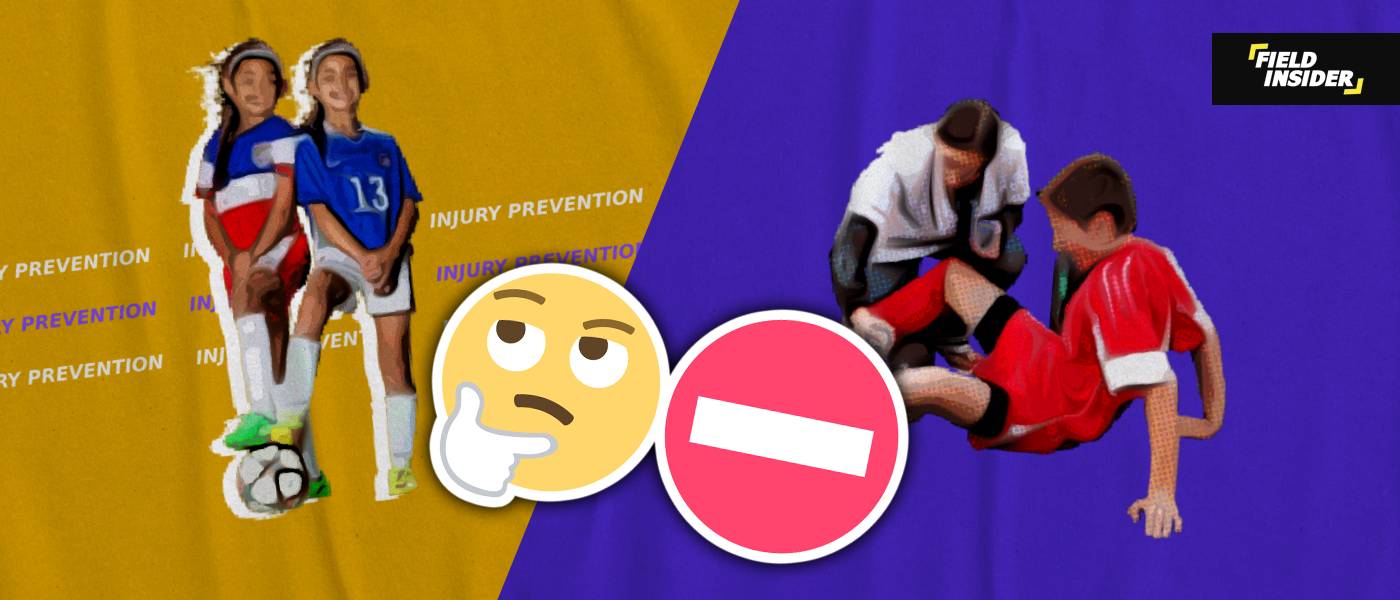Prevent Injuries For Your Kids: Analysis
To begin, the topic of injury prevention in youth soccer is of paramount importance, touching on the safety and development of young athletes. This article delves into the various aspects of injuries in youth soccer.
Our focus is to provide a comprehensive understanding of how injuries occur in youth soccer and the best practices to prevent them, ensuring a safe and nurturing environment for young players.
Key Takeaways
| Main Topic | Key Takeaways |
|---|---|
| Understanding Youth Soccer Injuries | Exploring the prevalence and types of injuries, and their impact on young athletes’ development. |
| Key Factors Contributing to Soccer Injuries | Identifying overuse, improper technique, and external factors like playing surfaces as major injury causes. |
| Practical Steps for Injury Prevention | Emphasizing warm-up routines, training techniques, educating on how to prevent injuries, and the role of nutrition and hydration. |
| Analyzing Youth Soccer Programs | Evaluating safety measures, coaching standards, and best practices in youth soccer programs. |
| Injury Rehabilitation and Recovery | Highlighting the importance of early diagnosis, proper recovery guidance, and safe return to play. |
Understanding Youth Soccer Injuries
Prevalence of Injuries
Youth soccer, while being a source of immense joy and development for children, also brings a notable risk of injuries. From sprains and strains to more serious injuries like fractures, the prevalence of these setbacks is a topic that warrants attention.
Parents and coaches can further their understanding through our article on Different Levels in Youth Soccer, which sheds light on the varying intensity and risk at different play levels.
Common Types of Injuries
The most common injuries in youth soccer include ankle sprains, knee injuries, and shin splints. Understanding these specific injuries can help in formulating targeted prevention strategies.

Our piece on “Why Are Some Footballers Injury Prone?” dives into the common injuries experienced by soccer players and can provide valuable insights for young athletes and their guardians.
Impact on Young Athletes’ Development
Injuries can have a significant impact on a young athlete’s physical and psychological development. They can lead to time away from the sport, affecting skill development and potentially leading to a loss of confidence.
The article “How Football Improves Children’s Mental Health” discusses the importance of sports in a child’s development, underlining the need to prevent injuries for uninterrupted growth and enjoyment of the game.
Data and Statistics Highlighting the Need for Prevention
Data and statistics play a crucial role in highlighting the need for injury prevention. By understanding the frequency and severity of injuries in youth soccer, coaches and parents can better appreciate the importance of preventive measures.
Our in-depth analysis in youth football offers valuable data and insights, helping to underscore the urgency and importance of injury prevention.
Key Factors Contributing to Soccer Injuries

Overuse Injuries and Their Causes
Overuse injuries are a common issue in youth soccer, often stemming from intense training schedules and inadequate rest periods. These injuries occur when young athletes are repeatedly exposed to the same movements and stresses without sufficient time for recovery.
The Role of Improper Technique and Conditioning
Improper technique and inadequate physical conditioning are significant factors leading to injuries. Poor technique can place undue stress on certain body parts, while insufficient conditioning may leave young athletes more vulnerable to injury.
Resources such as “How to Become a Defender” or “How to Become a Midfielder” offer guidance on developing proper technique and physical fitness, tailored to specific playing positions.
External Factors Like Playing Surfaces and Equipment
External factors, including the quality of playing surfaces and equipment, play a crucial role in injury risk. Poor field conditions can increase the likelihood of falls and ankle injuries, while inadequate or ill-fitting equipment can fail to provide necessary protection.
Our article on football training equipment provides essential information on selecting the right gear and understanding the impact of playing environments on injury risk.
Exploring the Risk: Severe Injuries in Youth Sports
When it comes to youth sports, the safety and well-being of young athletes are paramount. A recent analysis sheds light on the severe injury rates that boys face across different sports.
The bar chart provided offers a visual comparison of the frequency of severe injuries per 1000 Athletic Exposures (AEs) in various sports, including Football, Wrestling, Basketball, Baseball, and Soccer.

The study published on the American Academy of Pediatrics reveals a concerning hierarchy of risk. Football, a sport known for its intense physical contact, unsurprisingly leads with the highest injury rate at 0.69 per 1000 AEs.
Wrestling follows with a rate of 0.52, while non-contact sports like Baseball and Soccer report lower rates, 0.19 and 0.25 respectively.
This visual comparison underscores the stark contrast in injury rates among the sports, highlighted by a connecting white line that traces the fluctuating levels of risk.
The chart serves as a crucial tool for parents, coaches, and sports administrators. It helps them in understanding the potential dangers and implementing necessary safety measures.
The findings can spur a vital conversation on the need for improved protective gear, better training, and perhaps a reevaluation of the rules for youth sports. The ultimate goal is to strike a balance between enjoying the physical and mental benefits of sports.
Practical Steps for Injury Prevention

Emphasizing Proper Warm-Up and Cool-Down Routines
Proper warm-up and cool-down routines are fundamental to prevent injuries. Warm-ups prepare the body for the physical demands of the game, while cool-downs aid in recovery and reduce muscle stiffness.
Strengthening and Flexibility Training
Incorporating muscle strengthening and flexibility exercises into training regimens is crucial to prevent injuries. Strong, flexible muscles are less susceptible to common soccer injuries like strains and sprains.
Our guide on physical training in football offers insights into exercises that enhance strength and flexibility, tailored specifically for young soccer players.
Technical Skill Development
Improving technical skills is not just about enhancing performance; it’s also about preventing injuries. Proper technique in passing, shooting, and dribbling helps avoid unnecessary stress on the body.
Regular Rest and Recovery
Emphasizing the importance of rest and recovery as part of training is vital. Overtraining is a major cause of injuries in youth soccer. Coaches and parents must ensure that young players have adequate rest between games and training sessions.
The importance of rest is further elaborated in our article “How Footballers Run for 90 Minutes“, which discusses balancing exertion and recovery.
Ensuring Safety with Shin Guards: A Must in Youth Soccer
Shin injuries rank high among common soccer injuries, making shin guards an essential piece of protective gear for young players. These guards are designed to shield the tibia, the main bone in the shin, from direct impacts, effectively reducing the risk of injury.
It’s important to choose shin guards that adhere to ASTM Standards for optimum safety. Remember, prioritizing your child’s safety is key. If the shin guards provided by their club fall short in quality, consider investing in a superior pair to ensure maximum protection.
Tackling the Risks of Concussions and Brain Injuries in Young Soccer Players
Recent studies raise concerns about the long-term cognitive effects of repeatedly heading soccer balls. This practice might lead to challenges in word retrieval, planning, focus, and slower data processing speeds. While the research is ongoing and not yet conclusive, it underscores the need for caution.
Educating players, coaches, parents, and officials about the risks associated with heading is crucial. Strict enforcement of rules around player-ball distance during restarts, and the use of age-appropriate, non-absorbent balls, especially in wet conditions, is recommended.
Analyzing Youth Soccer Programs
Evaluating the Safety Measures and Coaching Standards
When analyzing youth soccer programs, a crucial aspect to consider is the safety measures in place and the coaching standards.
This evaluation includes examining the qualifications of coaches, their knowledge in injury prevention, and how well they enforce safety protocols during training and matches.
Identifying Best Practices To Prevent Injuries in Organized Leagues
Identifying and implementing best practices for injury prevention within organized leagues is essential. This includes structured training programs that emphasize physical fitness, technical skills, and regular health assessments of players.
Leagues should also ensure adherence to rules and guidelines that prioritize player safety.
Injury Rehabilitation and Recovery
The Importance of Early Diagnosis and Treatment

Early diagnosis and effective treatment are pivotal in the rehabilitation and recovery process of soccer injuries. Timely identification of an injury ensures that appropriate measures are taken to prevent further damage and to start the healing process.
Guiding Parents and Young Athletes Through the Recovery Process
The recovery process is a crucial phase where parents and athletes need guidance and support. It’s important for them to understand the rehabilitation protocol and the timeline for recovery to ensure a safe return to the field.
Discussing When It’s Safe to Return to Play
Determining the right time to return to play is a critical decision that should involve medical professionals, coaches, and the young athlete.
It’s essential to ensure that the player has fully recovered and is physically and mentally ready to resume soccer activities. The decision should be based on a thorough assessment, not just the athlete’s eagerness to return.
Conclusion
In conclusion, to prevent injuries in youth soccer is a complex task that requires us to understand different aspects thoroughly.
We need to know about the injuries, recognize what causes them, carefully examine how youth soccer programs are run, and focus on the best ways to help players recover and rehabilitate.
By paying attention to all these areas, we can make soccer safer and more enjoyable for young players, helping them grow and stay healthy in the sport they love.








